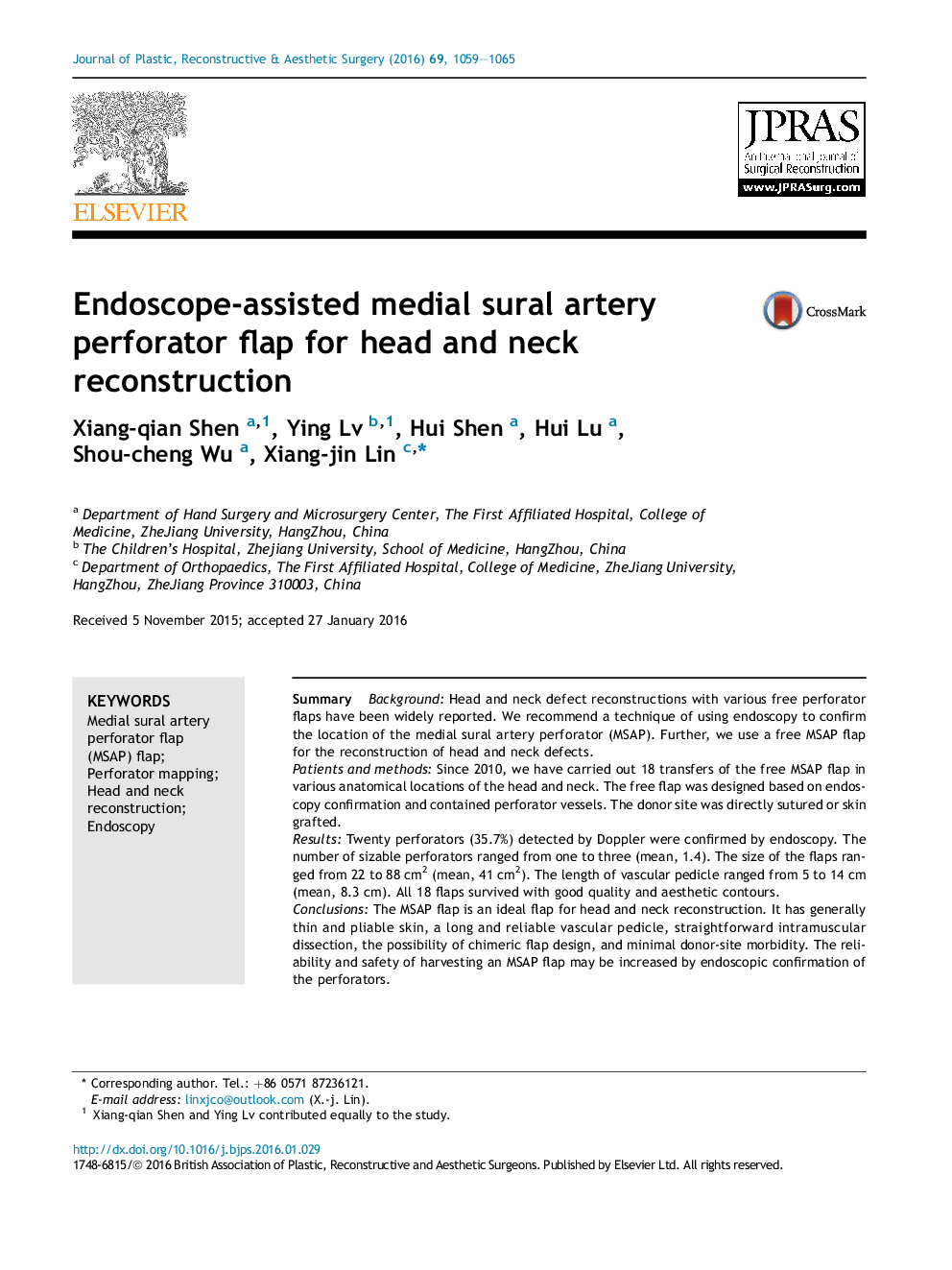| Article ID | Journal | Published Year | Pages | File Type |
|---|---|---|---|---|
| 4117010 | Journal of Plastic, Reconstructive & Aesthetic Surgery | 2016 | 7 Pages |
SummaryBackgroundHead and neck defect reconstructions with various free perforator flaps have been widely reported. We recommend a technique of using endoscopy to confirm the location of the medial sural artery perforator (MSAP). Further, we use a free MSAP flap for the reconstruction of head and neck defects.Patients and methodsSince 2010, we have carried out 18 transfers of the free MSAP flap in various anatomical locations of the head and neck. The free flap was designed based on endoscopy confirmation and contained perforator vessels. The donor site was directly sutured or skin grafted.ResultsTwenty perforators (35.7%) detected by Doppler were confirmed by endoscopy. The number of sizable perforators ranged from one to three (mean, 1.4). The size of the flaps ranged from 22 to 88 cm2 (mean, 41 cm2). The length of vascular pedicle ranged from 5 to 14 cm (mean, 8.3 cm). All 18 flaps survived with good quality and aesthetic contours.ConclusionsThe MSAP flap is an ideal flap for head and neck reconstruction. It has generally thin and pliable skin, a long and reliable vascular pedicle, straightforward intramuscular dissection, the possibility of chimeric flap design, and minimal donor-site morbidity. The reliability and safety of harvesting an MSAP flap may be increased by endoscopic confirmation of the perforators.
